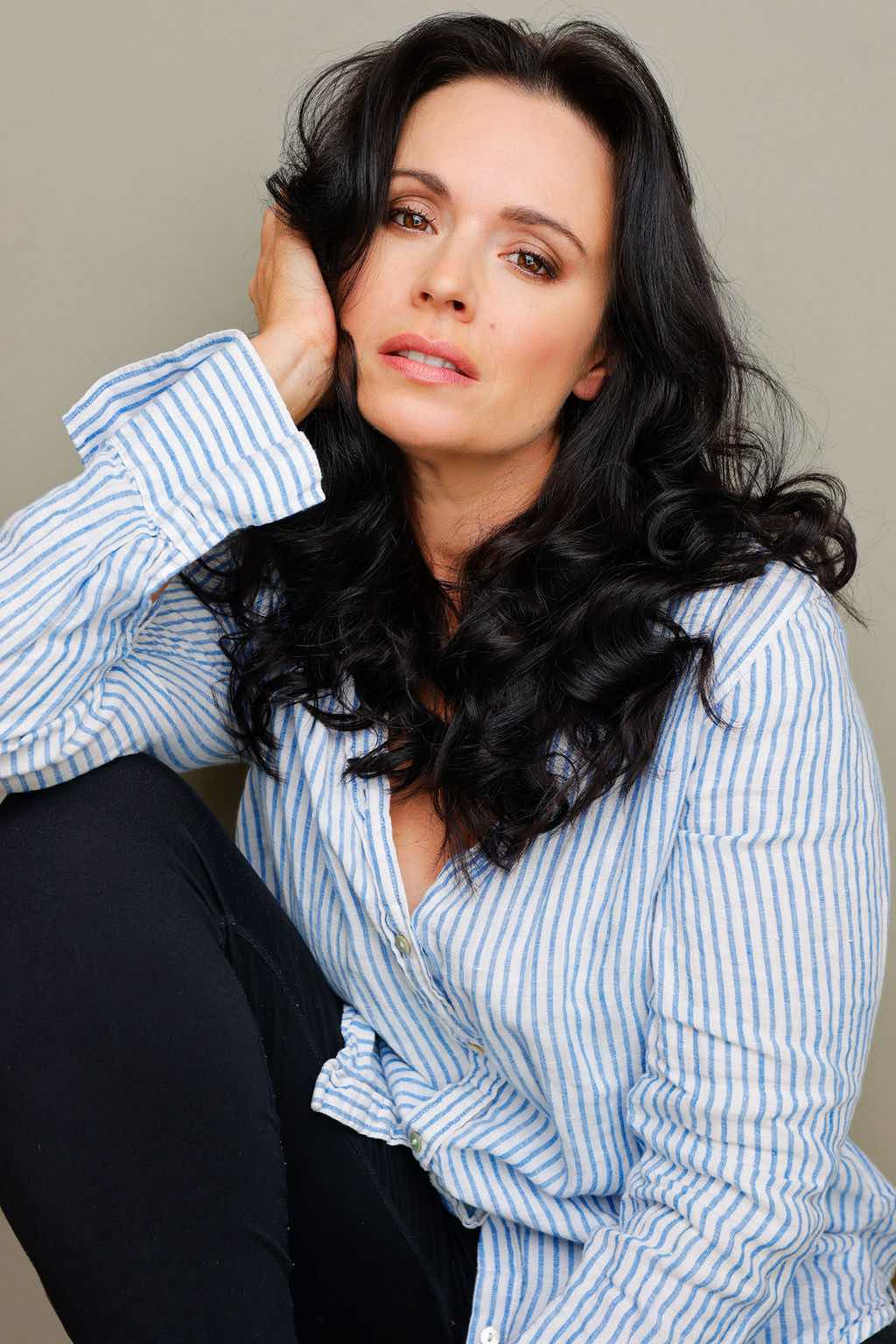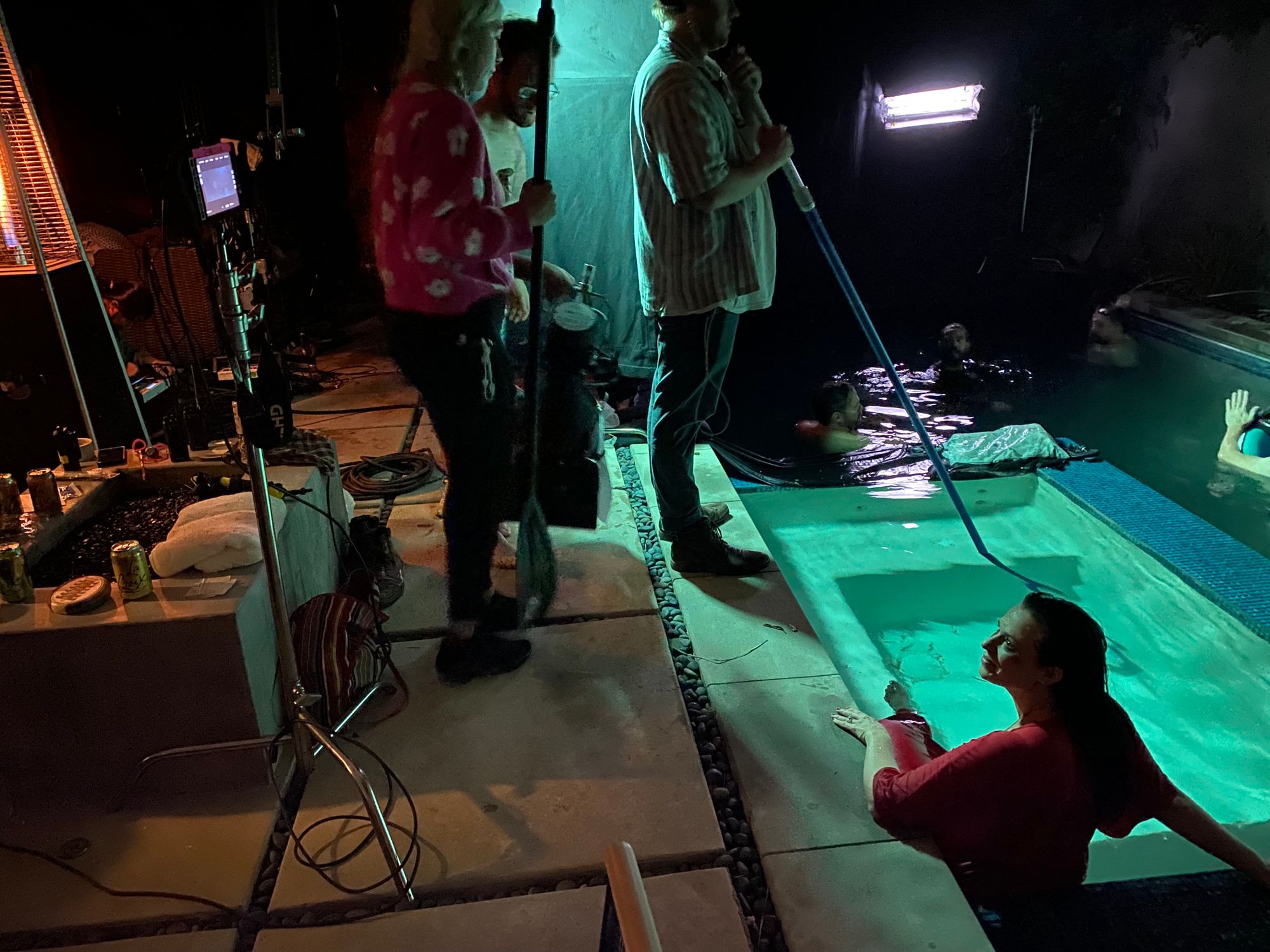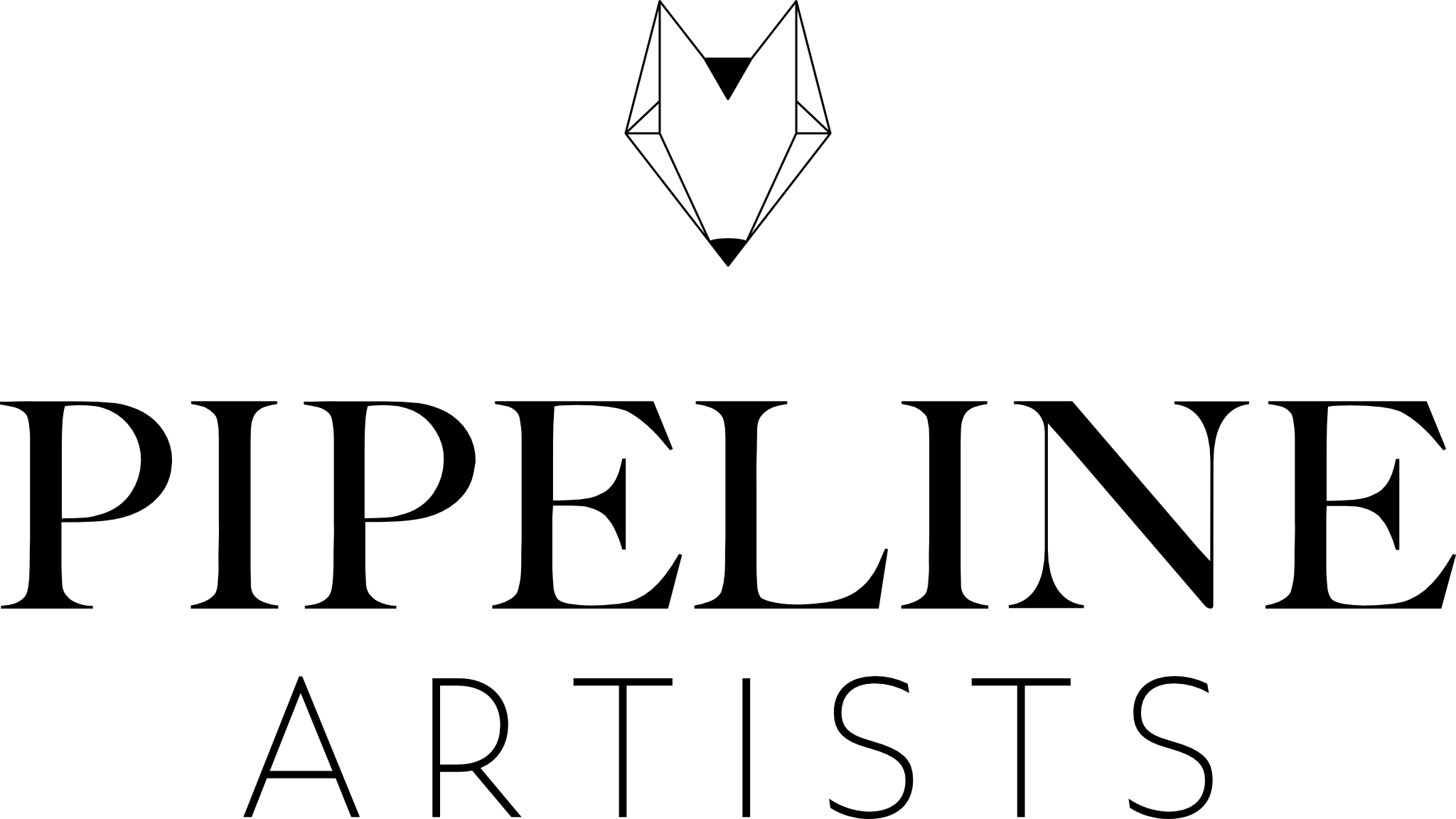
Filming a Proof of Concept Short: An Interview with Writer/Director/Producer/Actor Angela Cohen
Angela Cohen is an award-winning writer, director, and actress known for crafting stories that blend humor, heart, and intrigue. Her work spans from Oscar-qualifying films and Sundance premieres to groundbreaking virtual reality (VR) experiences, including a VR project selected by Google’s JUMPSTART initiative. As the founder of Charley Bear Productions, and the producing director of GlowMedia, Angela champions female-fronted narratives and teen mental health literacy, earning her recognition as a 2024 AWD Rising Director Fellow.
After losing her biological father in 2019, Angela wrote No Good Calls Come in the Middle of the Night, a supernatural horror script about grief, generational trauma, and crossing to the other side during the Celtic festival of Samhain. The script was selected for the Alliance of Women Directors Rising Director Fellowship, which required a proof-of-concept short to be filmed as part of pitching the feature to potential investors.
Jessica Hobbs: What was the inspiration behind the feature version of this story?
Angela Cohen: I lost my biological father to cancer right before the pandemic, and we were estranged for 17 years, so I had a visceral reaction to the grief that I wasn’t expecting, because I thought I’d taken care of those emotions. I had to write what I was feeling and try to process the grief. I couldn’t get over it without physically going to Ireland, where I found out I was a part owner of a family home after his passing, along with my uncle. After exploring my Irish roots and trying to understand our relationship and grieving someone who had traumatized me, I found solace in the land and in the family I never knew I had. Thus, the script was born.
JH: What was the process like to get into the AWD?
AC: It was the inaugural program of the Rising Directors Fellowship, and we had to submit a feature we wanted to make and had to be prolific short-form creators who had not yet made a feature. I had to submit proof of my previous films getting into Oscar-qualifying festivals, then I did an interview about my vision for the project and whether I was willing to make a proof of concept.
Mentorship is a big part of the program, which is wonderful; my mentor is Craig Zobel, who has recently done The Penguin as well as some beautiful movies I loved and resonated with, and who had also collaborated with my former mentor, Ann Dowd, who I’m hoping to bring into the feature. And I got it! There were about 500 people who interviewed, and they chose five, so it was very exciting.
They’ve provided a series of introductions to industry, so we have a big screening in February for each of our proof of concepts for investors and studio executives in hopes of garnering funding for the features.
JH: How important has this kind of mentorship been to the development of both the feature and the short?
AC: I can’t say enough amazing things about Craig and his generosity as a mentor. Craig was so great on helping me really focus on the tone of the piece and recognize that in making this proof of concept, that was the main priority for both this piece and the feature, making sure one reflected the other. He also read my script and offered some simple notes. When the script is so close to home it’s easy to over-complicate things, but it’s also a heavy, think piece. It’s mysterious and it can be difficult to discern where the audience is picking up what you’re throwing down and where they’re not, especially in an art house horror with a lot of symbolism.
Staying true to that while making it commercially viable is such a dance that Craig has done really well in his films. He was so helpful in helping me get clear on what my story was.
He also went through the shot list with me, which was a practice in articulation of what I wanted to say to my DP on set, and providing guidance in how certain shots could intensify what I wanted to accomplish just by making them a little bit disparate from one another. It was all there, but he helped me put the puzzle pieces together. He provided that confidence. This is your movie! Go practice, go shoot something underwater, see what it looks like on your iPhone. He encouraged me to get out and do it, so when we were on set, I already had it in me.
JH: What exactly is a proof of concept?
AC: I think people have a lot of definitions for it, but for me it was an opportunity to showcase the tone, characters, and world of the film to give the viewers a sense of what the bigger film could be. I wanted to leave it with a cliffhanger, so people wanted to come back for more. I think that can be an effective tool for bringing in a hungry audience. People need to understand the world, but maybe not have all the answers.
JH: When it came time to make the proof-of-concept short, you made a very bold decision: you took the hardest scene in the movie, in which the main protagonist jumps into the ocean to save her husband from drowning, only to be pulled in and nearly drown herself, and make it the short version of the story. Why choose that scene? What did that require, logistically?
AC: I didn’t want to give anyone an opportunity to say no to me. It’s the hardest scene in the movie to shoot, both for the actors and the permitting, plus what’s actually happening with action and safety precautions. I wanted people to say, “Oh, if she can do that, she can do the rest of the movie.”
As a first-time feature filmmaker, people find all the reasons to question if you can accomplish what you want to accomplish if you haven’t done it already. I’m trying to do something I’ve never done before, building a new world, filming this chaotic, difficult thing to shoot that requires a lot of moving parts, and I think we did that, which is exciting.
I really wanted to encapsulated the tone and characters. It’s a bit of an esoteric scene, but it has so much symbolism to the themes of the film and the reason behind it. How does it relate to the bigger picture of the plot? I don’t think it needs to. We’re not looking at the plot here. What’s it going to feel like when I see this feature? Am I going to want to see what comes next in the feature? Are the characters intriguing to me? I hope that’s what we accomplished.
It’s hard to find one given scene that does that—that was the real challenge of the proof of concept. You have a hundred pages and can’t possibly distill it into six or seven minutes, so what is it I want to say? That, to me, was a woman who’s constantly trying to save everyone around her and learning that you will literally drown if you don’t save yourself.
She has this opportunity to continue this old pattern of saving everyone until she almost dies. When she learns to save herself, the spell can take place and what she wants can occur, which is talking to her father during a resurrection at Samhain.

JH: Your primary background is in acting. Directing the film is a ton of work as it is; why also cast yourself as the lead character?
AC: That was a no brainer because it’s such a personal story. I resonated with the characters because it was me, I went through it. So, for me, it wasn’t pulling double duty until I was on set, and then there was a lot to do at once! But no one was going to do it the way I was going to do it. That doesn’t mean it was going to be any better or worse if I cast someone else, but I knew exactly what I wanted, and I knew I could do that. It didn’t feel like I was biting of more than I could chew, and I’d done it before. I’ve cast myself in a number of things I’ve directed, and then I’ve directed things I haven’t been cast in. I felt comfortable enough in both roles that I could bring something different to the screen for this film.
JH: What do you wish people understood about filming a short as a proof of concept?
AC: This is the first time I’ve shot a proof of concept, and the biggest challenge was trying to tell a full story with a beginning, middle, and end and also sell it as a proof of concept. It’s rare that you do both while being true to the tone of the film. I’d written another short that was more plot-heavy that was going to cost more, and I thought I was raising money to make a feature, why try to raise this much to make the short version? It seemed redundant. So, I think the most effective use of the funds was to throw away the hope of making this really big thing in a small way and trust that if I captured the tone, world, and characters, that would be enough.
A proof of concept is not always going to play at festivals, which is the ideal we’re used to in the trajectory of a short to a feature. So, letting go of that and knowing it might not play SXSW or Sundance because it’s not a traditional form of a clear beginning, middle, and end—it’s being plopped down on page sixty-six of this feature. We tried to incorporate elements to make a clear story, but it doesn’t always go that way. It’s a little more of a snippet as opposed to a full short film, but I did my best to give it enough that an audience would want to see it at festivals as well.
JH: What happens next?
AC: We have the feature deck that we are currently sending to investors, and we have some interested investors, which is great. We’re attaching cast, we’ll have the big screening in February for studios and production companies, and I’ve been meeting with production companies in Ireland to hit the ground running there. Hopefully, we’ll bring on some financing, and we’ve applied for Screen Ireland funding because I’m a dual citizen there.
With the combination of that and film credits, we’ll make a film!
I will also submit to festivals. Especially in Europe, there are a lot of festivals that will resonate with a more art-house approach that isn’t the linear storytelling narrative that we’re used to in the U.S., and some festivals in the U.S. embrace that philosophy, so we’ll be submitting to those.
I’m also very excited that my production company, Charley Bear Productions, will be leading international writing retreats with established industry mentors starting in 2025!
JH: Any last thoughts on the experience?
AC: It’s been fun to be in the post process with the proof of concept and to continue working on the feature. Now I see it more clearly that just in my head, I’m adding music and color and sound design. It’s exciting to get more granular for the feature scenes with those elements in mind. It can only enrich the storytelling experience of reading the feature now, and it inspires some new elements of the theme.
For example, my colorist is so talented, and just seeing the alter scene come to life and how the candles glow in a powerful way inspires more of what the story can feel like when they cross the veil on Samhain and go into the other world. What feelings can we create in this magical realm that I wasn’t as accessible to feel before it was on a screen?
It helps me as a writer to see things, and now that I’ve visually created it, I can grow it even more.
*Feature photo by Leah Huebner

